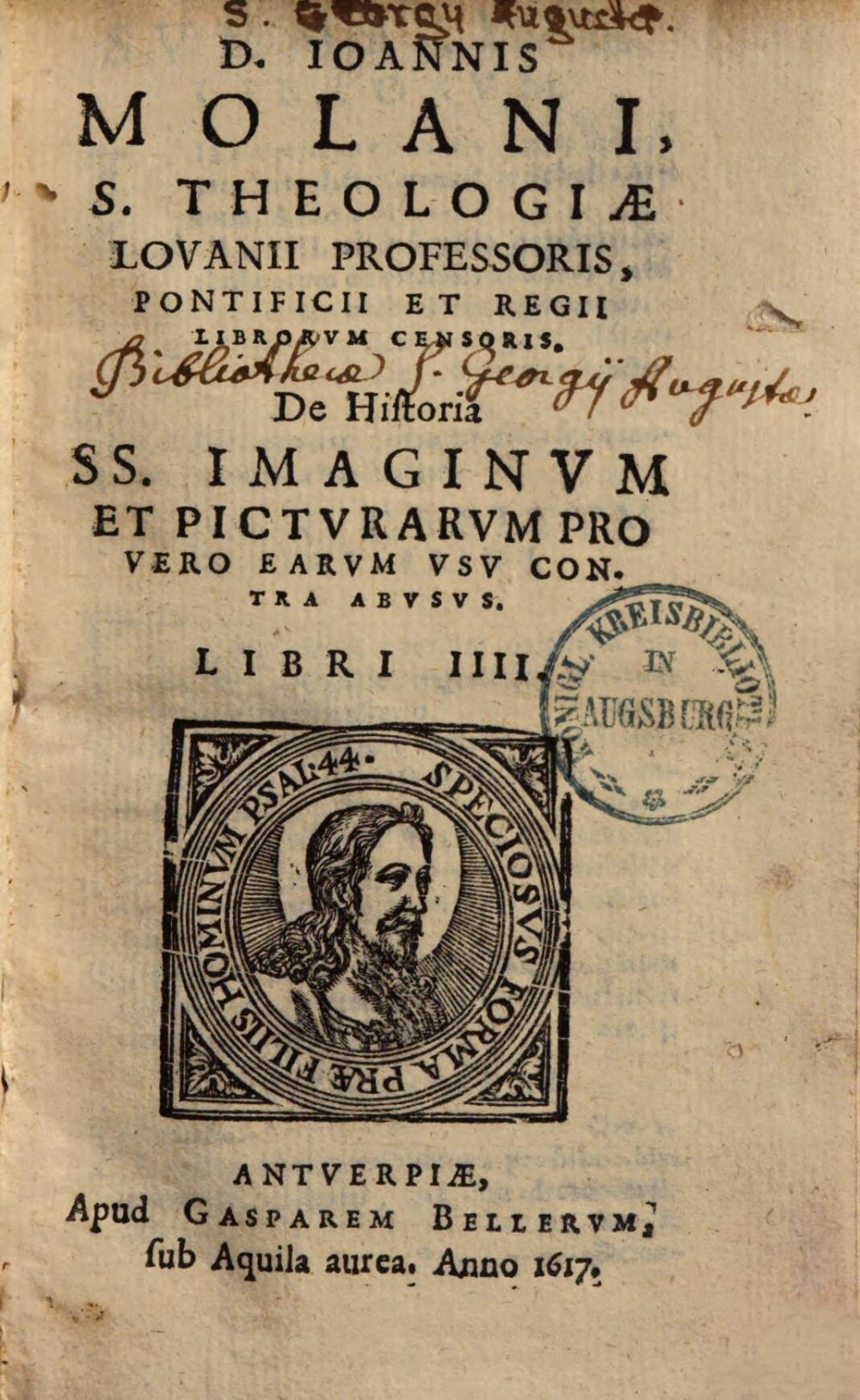
Augsburg, Staats- und Stadtbibliothek — Th H 1475. Digital Reproduction: München, Bayerische Staatsbibliothek, 2015.
In book 2, ch. 18, Molanus gives several examples of iconographic traditions of his time which, according to him, are suitable for the decoration of churches. He does not so much regard them from an esthetical point of view and neither from a mere iconographical point of view, instead, his main point of interest is how well-established the stories are on which they are based. Molanus refers to early Christian sources for the decoration of churches and confirms the suitability of stories from the Holy Scriptures for this scope.
“In the first place, there are accounts of the Holy Scriptures, both of the New Testament and of the Old Testament, which antiquity has already painted with extreme care. In effect, the benevolent Nilus of Ancyra wrote to the proconsul Olympiodorus: ‘I saw that the walls of the church are covered with depictions from the New and Old Testament by the best-instructed painters. Grace to them, who ignorant of the Letters and not able to read the Holy Scriptures can memorise them by heart and contemplate the painting. Who are those, which with such loyalty and skill serve the Lord with their work?’ As a result of the reading of these words, at the fourth session of the Council of Nice, the legates of Pope Hadrian added: ‘John, who now is with God, once did such a work. When he built the Church of the Saviour in Rome, he had the story of the Old and New Testaments painted on the walls on both sides of the church: here Adam was driven out of paradise, there the good thief entered paradise, and so on.'”
“Inter quae primo loco recensentur historiae sacrae scripturae, tam novi quam veteris Testamenti: quas etiam vetustas accuratissime depinxit. Scribit enim B. Nilus ad Olympiodorum Procos. Novi et veteris Testamenti historiis hinc inde parietes templi repleri doctissimi pictoris opera velim, quo scilicet hi qui litteras non norunt neque sacram scripturam legere, queunt, contemplatione picturae in memoriam reducant, quinam germane vero illi Deo per fortia facta servierunt. Quibus verbis Niceae in quarta actione lectis subiercerunt vicarii Adriani Papae, Tale etiam qui nunc in Deo quiescit Ioannes olimfecit. Nam cum templum Romae Salvatoris extrueret, in utroque pariete templi historiam veteris et novi Testamenti inscripsit. Hinc quidem Dam exeuntem paradisum, illinc vero latronem paradisum ingredientem et reliqua. Paulinus quoque in natali nono, sancti Felicis, ita canit. ‘Nunc volo picturas fucatis agmine longo porticibus videas, paulumque, supina fatiges colla, reclinato dum perlegis omnia vultu. Omnia namque tenet ferie pictura fideli qua senior scripsit per quinque, volumina Moses: quae gessit, domini signatus nomine, Iesus et rursus natali decimo, Sanctasque feramur in aulas, miremurque sacras veterum monumenta figuras: et tribus in spaciis dua Testamenta legamus.'”
Molanus 1996, 172, n. 3 and 173, n. 5.; Iovinova and Jeffrey (eds.), Transmitting and Circulating the Late Antique and Byzantine Worlds, Leiden: Brill, 59-60.



